We're an affiliate
We hope you love the products we recommend! Just so you know, we may collect a share of sales or other compensation from the links on this page at no additional cost to you. Thank you if you use our links, we really appreciate it!
Some dogs growl while we pet them, making us anxious and hesitant to do it again. In this article, we will talk about this issue. Read on to find out the answer to your question “why does my dog growl when I pet her?”
Dogs growl in the most unforeseeable situations, such as when certain guests are over, when they meet other dogs, or when playing with their toys.
Some dogs even growl when they are being petted, which makes some people uneasy about whether to pet them or not.

Most people often assume that growling is a sign of aggression, but it isn’t always that simple. There are various things your dog may be trying to say when they make these growling noises, and when you listen closely, these growls will not sound the same.
In this article, we will be familiarizing ourselves with the potential causes of growling and what you could do about it.
7 Types of Dog Growling and How To Deal With It
There are several ways for a dog to communicate with their pet parents and other dogs, such as tail wagging, facial expression, body posture, and of course, growling.
Pet parents need to understand what their dog is trying to “say” through growling and the proper way to react. You might be surprised by your ability to interpret your dog’s growling.

According to a study on people’s ability to understand dog growls by The Royal Society Publishing, most participants who own a pet were able to correctly distinguish through recorded audio the difference between a playful growl, a guarding, and a fearful growl.
Like communication with humans, the audio cues a dog’s audio signals can express different meanings and emotions. Here are what the different types of growls mean and ways you can react once you understand them.
1. Playful Growling
Dogs can be very expressive during playtime, and their growls may sound frightening, especially to first-time pet parents. Your furbaby might growl at humans when playing games that involve roughhousing, or they might growl at other dogs when chasing them.
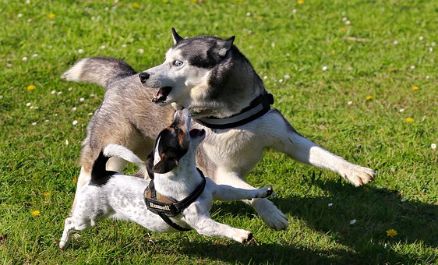
Energetic play is a good thing, and the growls are always expected from it. However, if you observe that the growls are getting more extreme, you may want to take a break from a play session until things calm down.
If your dog is playing with another dog, have them separated for a few minutes until they have calmed down.
Signs of playful growling are the play-bow position, wherein a dog’s bottom is pointed up in the air while the head is bowed down accompanied by a relaxed, open mouth and belly.
2. Affectionate Growling
Your dog growls but wants to be petted? When dogs are being petted, they feel excited and content, and growling is one way to show it to their owner. It can be heard similar to the louder purr of a cat.
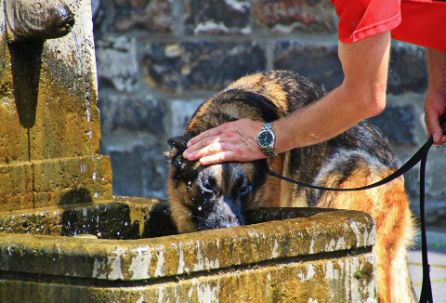
Generally, affectionate growling is nothing to worry about, and it will only become an issue if people see this as aggression. As a pet parent, you need to explain to people that this is normal and nothing to be scared of.
The simple solution to this is to add more stimulation through petting and walking. Remember that a tired dog is a happy dog, and once a dog has used up all its energy for the day, they are less likely to demand attention.
3. Frustrated Growling
Whenever a desire is not met, such as a toy, hunger, or playing with another dog, frustrated growling may occur. This also happens if they see a new object while on a walk but cannot get closer to investigate.
Knowing how to differentiate frustrated growling from the other types is quite challenging. This will test how well you know your dog.
Do they like to play with other dogs they see in parks? Do they always try to sniff particular objects they have recently encountered? If yes, then they are exhibiting frustrated growling.
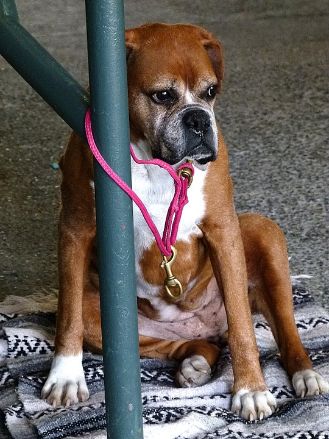
This kind of growling can lead to some problems, especially if there is another dog’s involvement. If your furbaby approaches another dog and starts frustrated growling, it can be misinterpreted as aggression that may lead to a fight.
Reducing frustrated growling requires obedience training on easing your dog’s reaction when they don’t get what they want right away.
If you’re willing to train your dog on obedience, then I recommend this online dog training program.
4. Fearful Growling
A fearful growl usually happens when your dog is afraid of a threat. The threat can be themselves, their pet parents, the objects they desire, or their territory. Fearful growling is their way of saying “back off” to these threats.
The main goal of fearful growling is to let the threat know that they are demanding distance. They are trying to intimidate it to leave, as they do not want to start a fight.
This often happens when dogs meet unfamiliar faces or are subjected to other pets and animals in their territory.
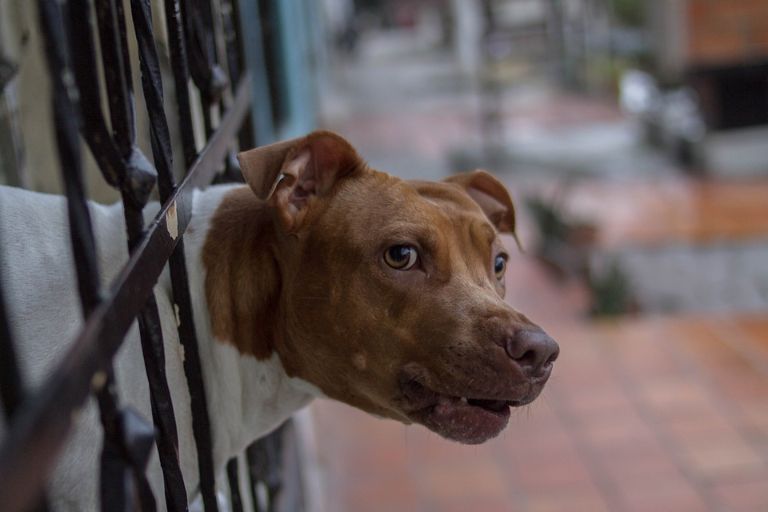
To distinguish fearful growling, observe your dog if it starts growling with a low tone and a closed mouth, stiff body language, and decreased breathing pace. From there, it will begin to snarl with the teeth slightly exposed if the threat is still visible.
Keep in mind to immediately intervene once these signs are seen to avoid physical conflict. The first step is to identify what they see as a threat, causing your furbaby to growl, and remove it if possible.
If your furbaby is on a leash, move to an area where they will not see the threat.
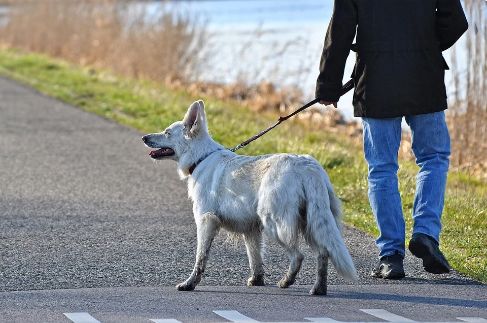
To avoid the frequency of fearful growling, you may want to start with behavior training. If your furbaby is afraid of strangers, add more socialization by familiarizing them with other people.
Lastly, eliminate all possible anxiety triggers in your home to lessen the potential threats.
5. Aggressive Growling
If a fearful growling is a way to put distance between your dog and a threat, aggressive growling is the opposite. It is a dog’s way to reduce their distance from the threat to have a greater chance to attack it.
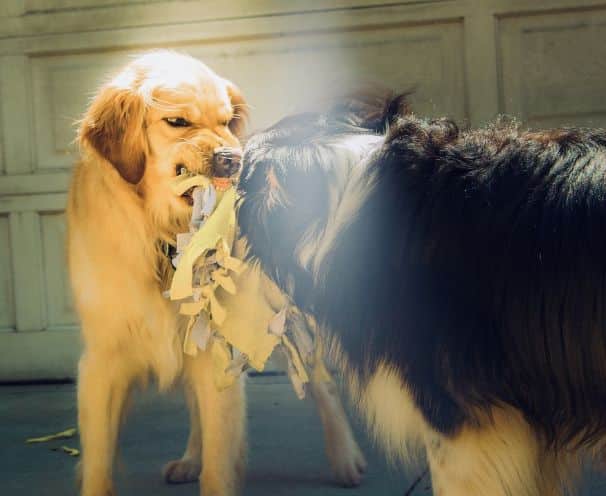
Watch out for the following signs of aggressive growling: stiff body, snarling of the teeth and showing it aggressively, and bolting.
If a dog is showing these signs to other dogs, it is their way to establish dominance and warn them that they are not afraid to fight.
Some dog breeds are highly susceptible to attack another animal with the intent to hunt and kill, due to a high prey drive.
This type of growling is dangerous as they intend to fight and do harm to their threat. If your dog is on a leash, leave the area immediately until the threat is no longer seen.
6. Fighting Growling
Fight growling is the most threatening growl that pet owners should never tolerate. It is essential to distinguish the difference between play and fight growling.
Whenever play sessions become too aggressive, or a dog has not socialized often, it can lead to a fight.
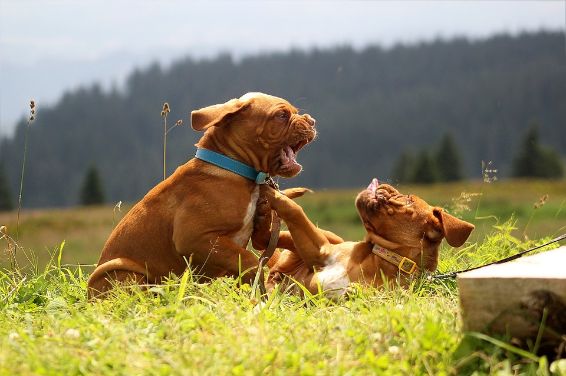
Always observe your dog’s body language to distinguish if they are growling to fight. Signs to look out for are closed mouths with curled lips, pinned ears, and raised hair at their back.
The best way to avoid aggression is to break it off before it even starts. Once you have seen these signs, leave the area as soon as you can.
7. Pain Growling
Dogs may show that they are in pain due to an illness or injury when they growl. You may notice this, especially if you touch a certain area of their body that is most likely to be injured.

The best thing to do is to know the signs of pain in your dog and get in touch with your veterinarian as soon as possible to help find the cause and do something about it.
My Dog Growls When I Pet Him: What Does It Mean?
Whenever you hear your dog growling when petted, do not jump to conclusion that they do not like it. It’s a good thing that your dog is growling because they are trying to say something to you.
A dog that has learned that growling is bad behavior or didn’t have the chance to learn about proper communication is more dangerous because he won’t be able to warn you before he snaps at you.
There are several reasons why your dog growls when petted, and we will be tackling these in this section. So, why does my dog growl when I pet her?
1. They are feeling pleasured
You will be able to tell that your furbaby is contented and pleasured while you are petting them by a low, affectionate growl that may include a wail that can continue for an extended period, depending on how long you are playing with them. It may be compared to a cat’s purr every time they are being petted.

It is easy to tell from his body language that they are feeling pure happiness and pleasure. Look out for visual cues such as a lowered tail, loose stance, and open mouth.
If the petting has abruptly stopped, your dog may start whining about demanding even more belly rubs.
2. Something is wrong, medically
A sudden behavior change oftentimes comes from pain or discomfort, especially when you are touching the affected area.
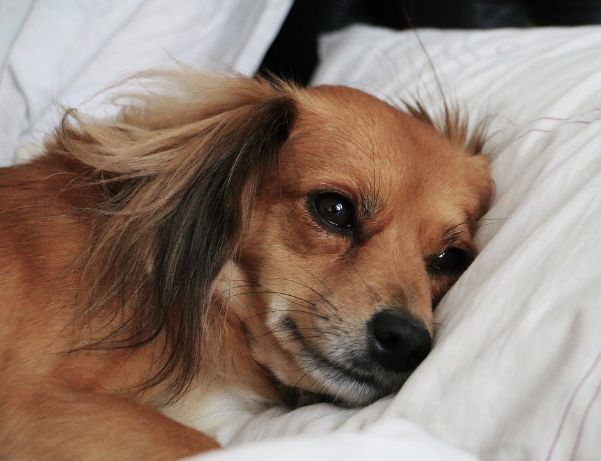
Several conditions cause aggression as a symptom, such as hypothyroidism. Getting your dog regularly checked by your veterinarian can rule out any underlying medical concerns.
3. You are touching a sensitive area
Even if they don’t admit it, dogs have a preferred area to be rubbed and scratched, whether their belly, back, or chest. But some dogs seem to dislike being petted on the head or around the muzzle, ears, and paws, mostly if it wasn’t regularly done during their earlier years.
You can try to make your dog less sensitive to being touched in those specific areas by regularly interacting with that said part.
For example, if you want to work on your dog’s paws, simply teach your dog the trick “shake,” which automatically involves his paws being touched without him noticing it.
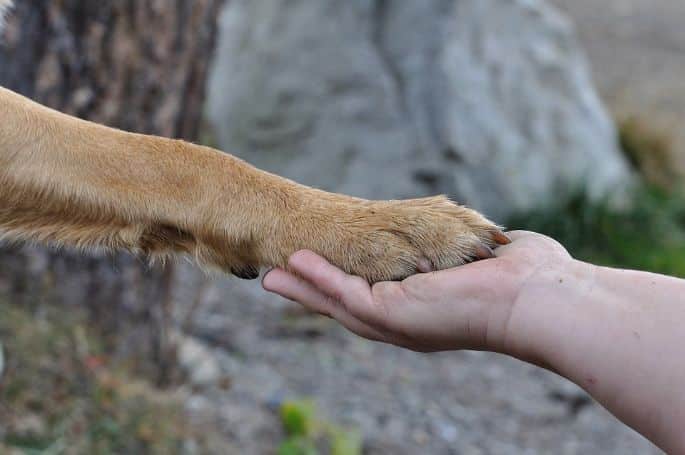
When working on making these areas less sensitive, use a lot of treats but be mindful not to encourage unwanted behavior, which means removing the treat when your furbaby starts growling.
4. Being petted by unfamiliar faces
There are occasions when your visitor wants to pet your dog, but your furbaby throws them off by growling. This is their defense mechanism and their way of saying they see them as a threat.
An attempt at physical contact by an unfamiliar face will be rejected with a low growl. Dogs are territorial animals, and they just don’t like their personal space being invaded.

To lessen this kind of incident, start making them friendly with humans and other animals by exposing them to areas with small groups of people.
Once they are accustomed to that number of people, take it to the streets and allow them to see that there is no harm in socializing with lots of people.
When having visitors over, inform them how to approach your furbaby properly. They should avoid bending over to the dog, as this is seen as a threatening position for them. A quick rub under the chin is much better than a pat on their head.
5. They are warning you
As previously mentioned, there are various reasons why your dog is growling, and it has different meanings. By distinguishing these, you will be able to figure out what they wanted to say. Depending on the situation, your dog might warn you to leave him alone or want some more.
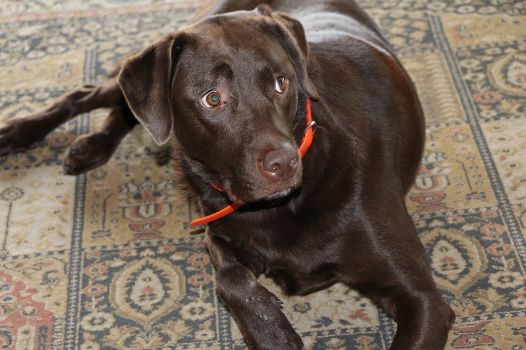
While growling is always not a bad thing, figuring out the reason will help prevent unwanted incidents and eventually manage the situation better in the future.
If your dog suddenly gives you an angry growl while petting him, he is probably saying that he has had enough, and you should leave him at peace.
6. They are anxious
Dogs can suffer from anxiety, just like humans do. One of the most common kinds is separation anxiety, wherein a dog exhibits signs of distress when left alone.
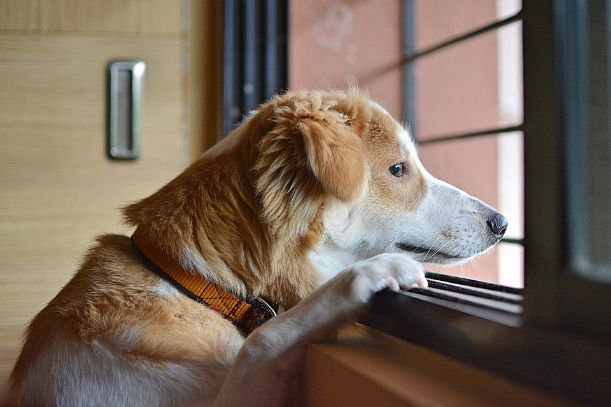
General anxiety symptoms include shivering, pacing, panting, destructive behavior, urination, drooling, excessive licking, and growling.
Dogs can develop a general anxiety disorder wherein they will always feel on edge and anticipate a threat to its surrounding. Petting him while having an anxiety attack can hurt him.
Paying attention to growling is vital for all pet parents, no matter the type of growl. They are trying to tell you something, so you have to listen to them!
Getting to know your dog’s unique ‘voice’ and body language will help you to translate their growls into a message you can act upon.
You can also check this guide I wrote that explains how dogs like to be petted.
We hope this helped you with your dog’s growling behavior and have answered your question “Why does my dog growl when I pet him?”.
Do you notice any strange growls while petting your dog? Comment down below!
Laura is the founder of Furs'n'Paws. She is a also a pet writer and expert with more than 20 years of experience of working with dogs and cats. She developed a very strong love for animals at a young age. Her passion led her to establish a thriving pet sitting and dog walking business in Dubai. As an expert in pet training, behavior, and nutrition, Laura is committed to helping pet owners and pet lovers by offering high-quality information on a wide range of topics.


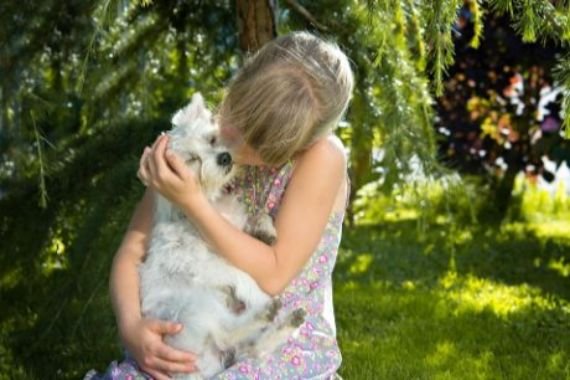
No responses yet